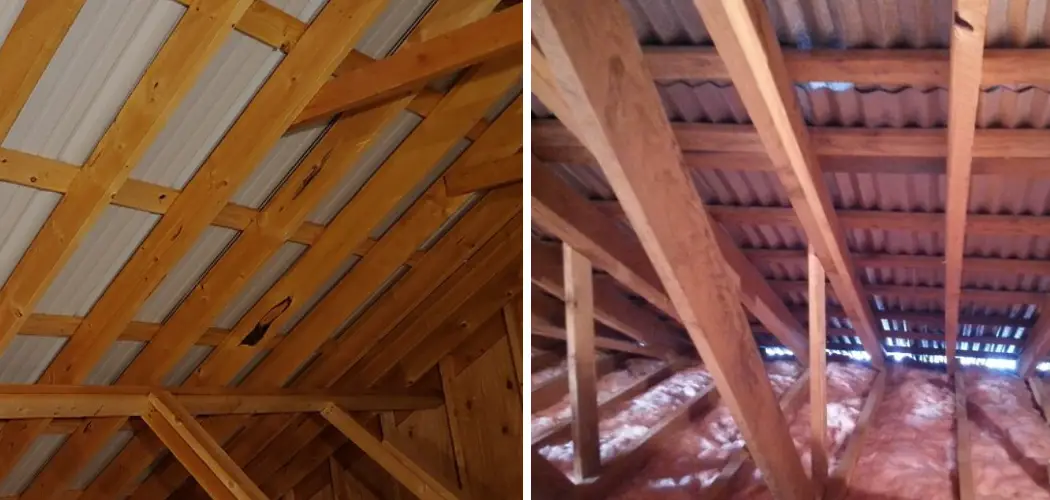Are you considering installing a metal roof on your home or business but aren’t sure how to go about it? Well, worry no more! Installing a metal roof over plywood is not only simple but highly beneficial. Not only does it add value to your home, but it’s also highly durable and energy-efficient.

By putting a layer of plywood over the existing roof, you can create a solid support base for the new metal covering and enjoy all its advantages, such as resistance to heat loss, durability against bad weather, and environmental protection.
But what if you don’t want to go through the hassle of tearing off the old layer of shingles? The good news is that you can install a metal roof directly over plywood without removing the existing roof. In this blog post, we will explain exactly how to install metal roofing over plywood in easy-to-follow steps.
The Advantages of Installing Roofing Over Plywood
Installing a metal roof over plywood offers a number of advantages, including:
• Durability – Metal roofs are much more durable than traditional asphalt shingle roofs, and the added layer of plywood provides extra protection.
• Easy Installation – Installing metal roofing over plywood is relatively easy compared to removing an old roof.
• Energy Efficiency – Metal roofs can reflect up to 95% of the sun’s heat, making them more energy-efficient and helping to reduce your energy bills.
Required Items for Installing Metal Roofing Over Plywood
- Plywood
- Metal roofing panels
- Nails or screws
- Drill/screwdriver
- Tape measure
10 Tips on How to Install Metal Roofing Over Plywood
1. Measurement
Measure the area to be covered and purchase enough metal roofing panels and plywood to cover the entire area. The right measurements and materials are essential for a successful installation.
2. Prepare Plywood
Place the plywood sheets onto the existing roof and use screws to fasten them down securely. Make sure you’re using the right kind of screws – metal roofs require a special type of screw that is designed to resist corrosion caused by exposure to moisture.
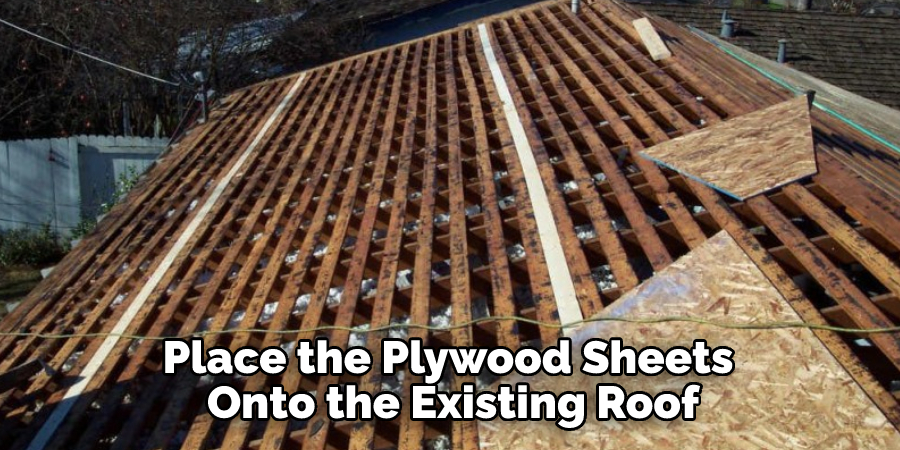
3. Attach Metal Roofing
Now it’s time to attach the metal roofing panels to the plywood base. Start by attaching the lowermost panel and work your way up, making sure all screws are tightly fastened in place. Use a drill or screwdriver for best results.
4. Install Flashing
Once you’ve finished attaching the metal roof panels, install flashing around any openings or edges to provide an extra layer of protection and ensure a waterproof seal. Flashing would be cut around windows and doors in order to ensure a waterproof seal.
5. Install Trim
Trim can be used to neaten the edges of your roof, as well as provide an extra layer of protection against wind and moisture. Use trim to cover any exposed edges or seams where two panels meet, and make sure it’s securely fastened in place.
6. Install Ice and Water Shield
Ice and water shield is a special product designed to protect your roof from moisture damage caused by ice, snow, or rain. It’s important to install this product before you finish the installation of your metal roof, as it will add an extra layer of protection against the elements.
7. Add Vents
Ventilation is essential to ensure your roof can breathe and prevent moisture buildup. You should install vents along the eaves, ridge, or gables of your roof, depending on the type of metal roofing you’ve chosen.
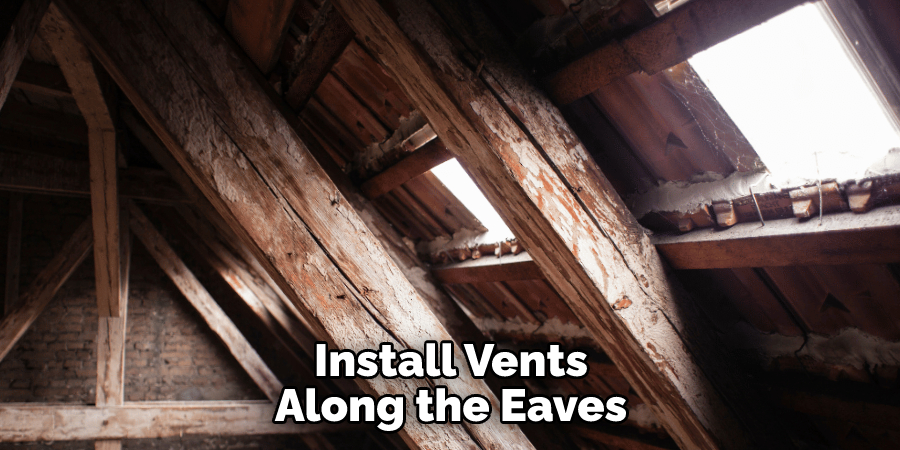
8. Install Gutters
Gutters are an important part of your roofing system, as they help to channel water away from your home and protect it from damage. Make sure you install them properly and ensure they’re securely fastened in place.
9. Install Lightening Protection
Lightening protection is essential for any metal roof installation, as it will provide extra protection against electrical storms. Make sure you install these products around the perimeter of your roof and check them regularly to ensure they’re in good condition.
10. Inspect Your Work
Once you’ve finished the installation, it’s important to inspect your work carefully for any mistakes or areas that could use some improvement. Check for gaps, loose nails, and other issues that could cause problems down the line.
After you’ve finished inspecting your work, your metal roof installation over plywood is complete! With proper care and maintenance, it should last for many years to come.
8 Care Tips for Metal Roofing
1. Inspect the Roof Regularly. A metal roof should be inspected at least twice a year to check for any signs of damage or wear. The inspection should include checking for rust, cracking, worn areas, and any missing fasteners.
2. Clean Debris From the Roof. Debris, such as leaves, twigs, and other materials, should be removed from the roof regularly to prevent water buildup or corrosion. Dirt may also need to be removed if it is preventing water from properly draining off the roof.
3. Remove Snow and Ice During Winter Months. Snow and ice buildup can cause damage to a metal roof, so it’s important to remove them as soon as they start to accumulate. Use a long-handle brush or broom made specifically for removing snow and ice from metal roofs.
4. Check for Proper Drainage. Make sure the roof’s drainage system is working properly by checking to ensure gutters, downspouts, and flashing are free of debris and in good condition.
5. Repaint or Seal When Necessary. If the roof has begun to show signs of surface rust or wear, it may need to be repainted or sealed. This should be done by a professional to ensure the roof is properly protected.
6. Check for Signs of Insect Activity. Insects can cause damage to metal roofs if left unchecked, so look around for any signs of infestation, such as holes, webs, and droppings. Contact an exterminator if any signs of insect activity are found.
7. REpair Any Damaged Areas Immediately. If rust, cracks, or other damage is discovered during regular inspections, these should be repaired right away to prevent further damage and degradation of the roof’s material.
8. Invest in a Quality Metal Roof. Quality roofing materials will have a longer lifespan and be more resistant to the elements. Invest in a metal roof made with quality materials that are designed for your specific climate and weather conditions.
These tips will help keep your metal roof in good condition for many years to come, ensuring it looks great and provides protection from the elements. With the proper care and maintenance, your metal roof will last for years to come.
Frequently Asked Questions
How Thick Should Plywood Be for Metal Roofing?
The thickness of the plywood should correspond to the gauge and type of metal being used. Typically, 5/8-inch or 3/4-inch exterior grade CDX plywood is recommended for most residential metal roofing applications. However, as a general rule, you should use whatever thickness is recommended by the manufacturer of your metal roofing system.
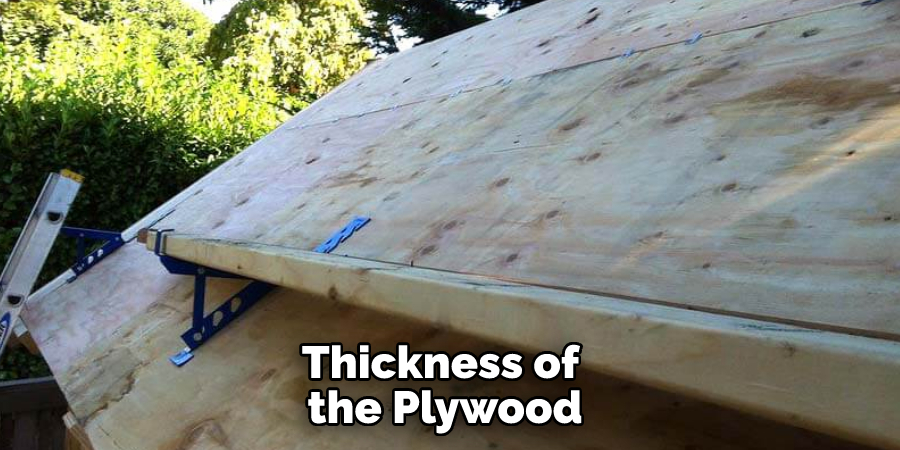
Some roofs may require thicker plywood to provide adequate rigidity for the structure, and it’s important that you follow the manufacturer’s specifications. If you are unsure of what thickness is required for your project, contact a professional roofer who can help you select the appropriate product for your needs.
How Much Will It Cost?
The cost of installing a metal roof can vary depending on the type and quality of the material you choose. Generally, metal roofing costs anywhere from $5 to $14 per square foot installed by a professional contractor.
However, factors such as your location, the complexity of the job and any additional features or materials needed can affect the overall cost. Be sure to get quotes from a few contractors before making your decision. Also, it’s important to factor in the long-term cost advantages of metal roofs, such as increased energy efficiency and durability. These benefits can help you save money over time.
Are Metal Roofs Loud?
The sound of rain on a metal roof can be slightly louder than on other types of roofs. However, most metal roofs are insulated with a layer of foam and felt, which helps to absorb some sound.
Some metal roofs also come with special coatings that help reflect noise. Additionally, metal roofing can be installed over an existing roof, like asphalt shingles, which further reduces the noise. This means that, in most cases, a metal roof is no louder than any other type of roofing material.
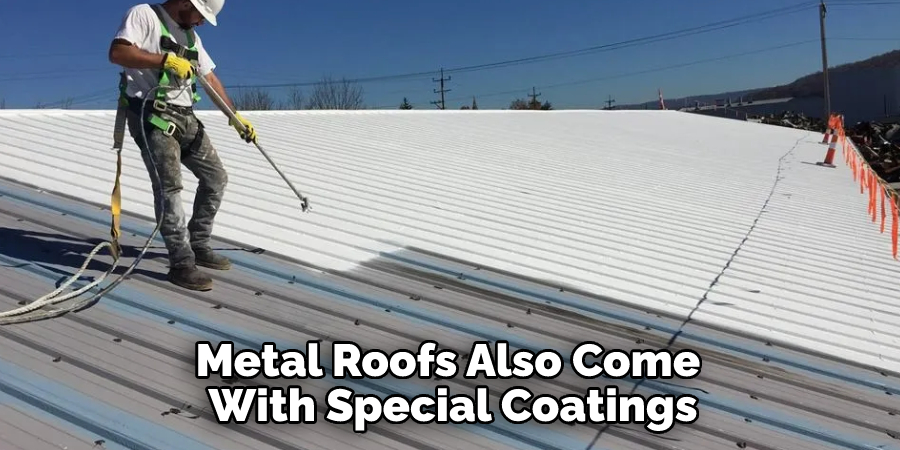
Conclusion
Installing metal roofing over plywood can be a great way to maximize the durability and longevity of your roof. It is important to consider all factors, such as choosing the right type of metal roofing, carefully measuring your plywood sheets, and making sure you position them correctly before installing.
By following these steps on how to install metal roofing over plywood, your metal roofing installation will be successful, and your structure will be protected from the elements for a longer period of time.
Additionally, keep in mind that when selecting an experienced contractor to help with the installation, ask for their references and check consumer review websites to make sure you are getting someone who knows what they’re doing.
Taking these extra steps will save you time, headaches, and money down the line. Ultimately, if you take proper precautions and pay attention to detail, installing a metal roof over plywood can be an extremely rewarding task.

